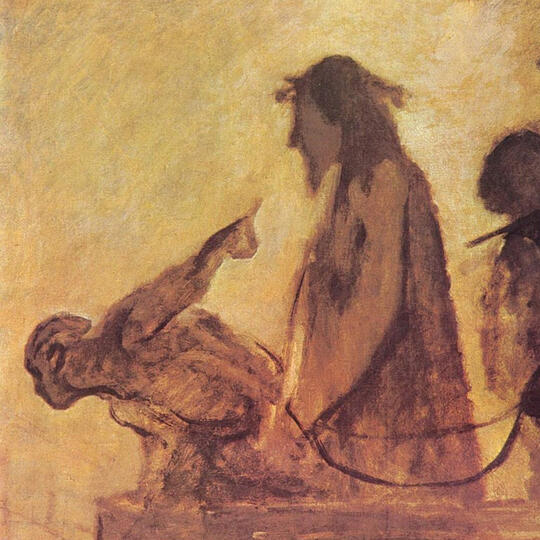
Life Lessons from Great Art
.
About
Great art doesn't just speak to our aesthetic sense. The best work also contains life lessons. This project explores the life lessons and meaning that great art--and the minds behind it--reveal to us._What Lord Byron and Leonard Cohen Can Teach Us About Aging
Posted June 10, 2024. Written a couple years earlier.Today we’ll look at Go No More a Roving, a poem by Lord Byron.Fundamentally, this is a wistful, romantic poem about growing older. It’s speaks to the experience of aging and having to say goodbye to our youth—whether we want to or not. It also is an early example of sampling (Byron “borrowed” much of this poem from an earlier work), and has inspired other great artists like Leonard Cohen, who himself released a version of the poem as a song. Let’s dive in:Written when Byron was 29, it’s the poem of a man who was wild—a partier, a philanderer, and likely many worse things. Byron realizes that he will not be young forever, no matter how much he longs for the romance of youth:So, we'll go no more a roving
So late into the night,
Though the heart be still as loving,
And the moon be still as bright.Though the world inside Byron (his heart), and the world outside (the moon be still as bright) has remained the same, something has changed within him. This universal feeling seems to haunt him.It’s something I even felt at age 9, when I looked back on a photograph of myself in Kindergarten and cried, knowing that the person I was then, so young, was lost forever. And now, I’m far past nine years old.For the sword outwears its sheath,
And the soul wears out the breast,
And the heart must pause to breathe,
And love itself have rest.Byron makes a sexual analogy here, with the sword and sheath likely representing penetration. But he goes deeper, affirming that our spirit, the soul, our will to live, it wears our body out and that even love, something we all search for and desire and chase—even that must “have rest”.Though the night was made for loving,
And the day returns too soon,
Yet we'll go no more a roving
By the light of the moon.Byron wrote these lines nearly 200 years ago, but the last stanza is universal. All lovers, all young people, they understand the thrill of staying up late, whether it is an innocent childhood sleepover, or a much more adult activity. Whether that’s videogames or drinking or watching shooting stars. By the end of the poem, despite his longing for youth, Byron realizes that the world is moving on from him. He is still young—he is only 29—but perhaps precisely because he still barely has his youth, he thus so acutely aware of what he is about to lose forever.Byron speaks to the beauty of youth, the tragedy of growing up, and that sense that everyone, one day will feel—of a newer, younger generation inhabiting an invisible world we were once a part of, but are now decidedly apart from.Everyone will age and die. And this poem, ostensibly about partying, speaks to the central questions of existence that we all have.The poem is one of Byron’s most famous, and it has been sung by many artists over the years, including Joan Baez. In fact, the poem itself was almost certainly “sampled” or inspired by a Scottish song with a similar refrain.But the modern version that fully captures the spirit of the poem is none other than Leonard Cohen’s take on the work. Cohen released his version of the song when he was 70, and while you might expect Cohen’s age would make the work darker, it is almost as if his age means he has moved past lament. Sung by Cohen, ‘Go No More A Roving’ becomes a beautiful, nostalgic look at the past. It is precisely his age and gravitas that allow the listener to move beyond a more petulant, aggrieved sadness and towards a quiet kind of nostalgic memorial for youth.The Cohen version, perhaps precisely because of his age, makes the meaning sweeter and more poignant.Ultimately, the universal message of the poem helps it resonate across the ages, regardless of who performs the song/poem.Get in touch](#contact)!
Contact
Please contact us to learn more about the project!
(mailto:[email protected])